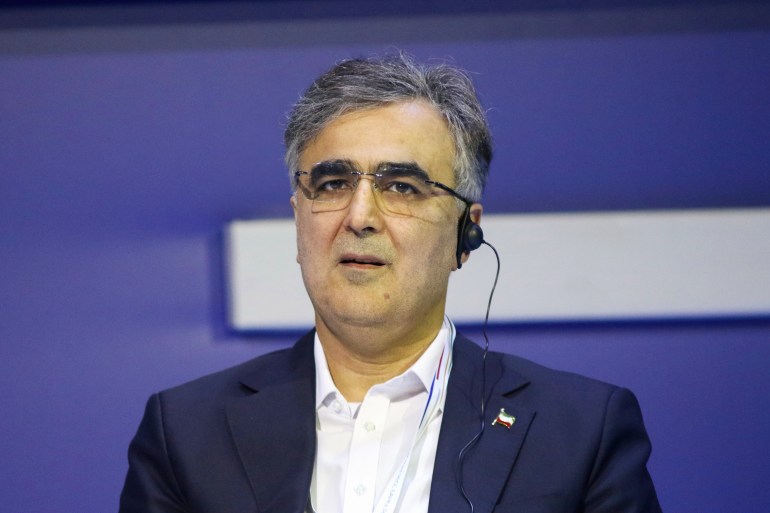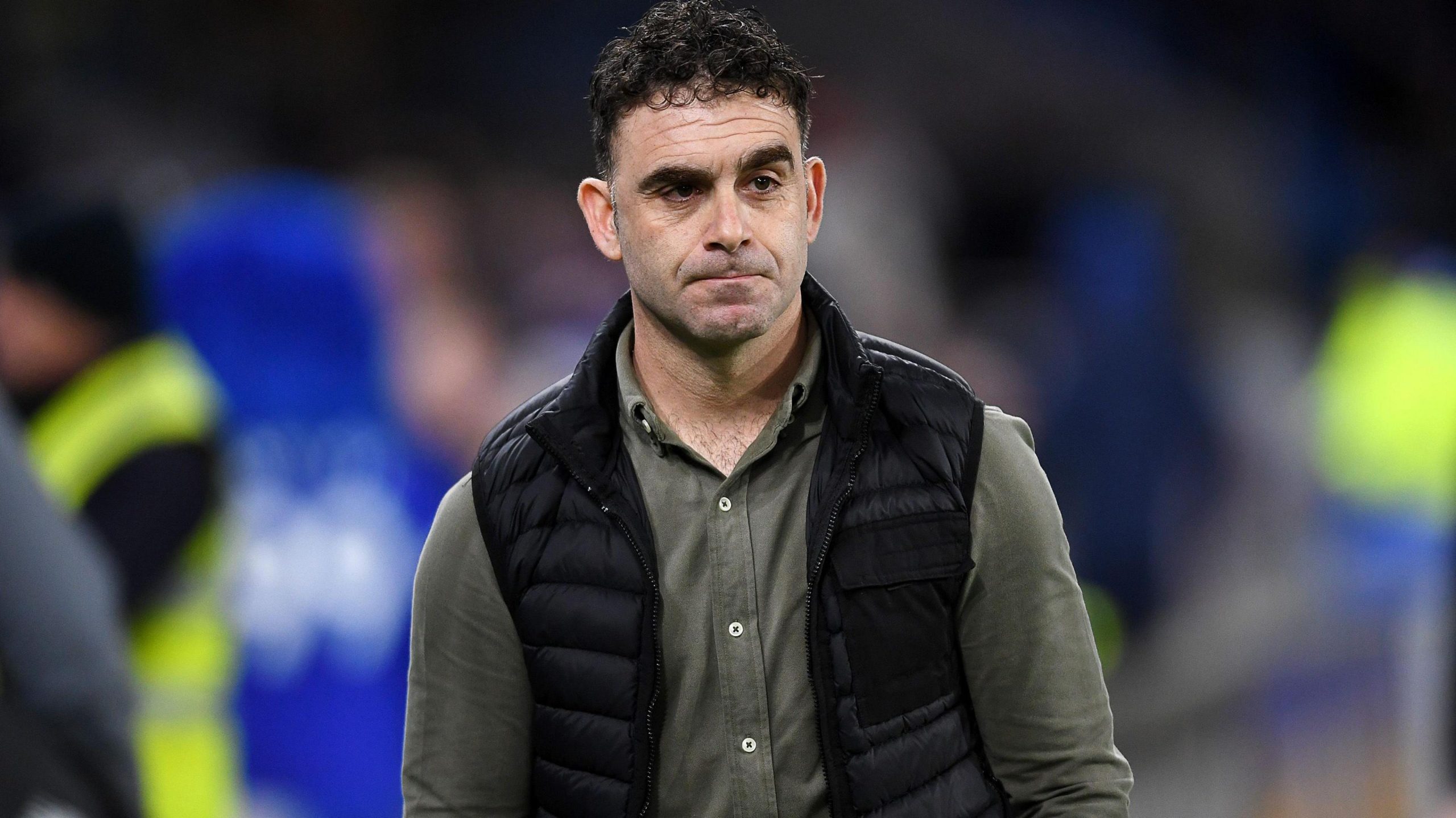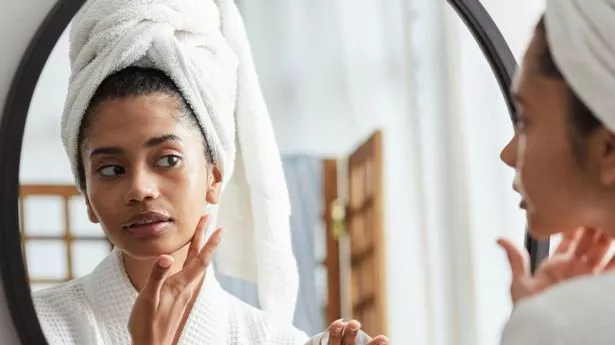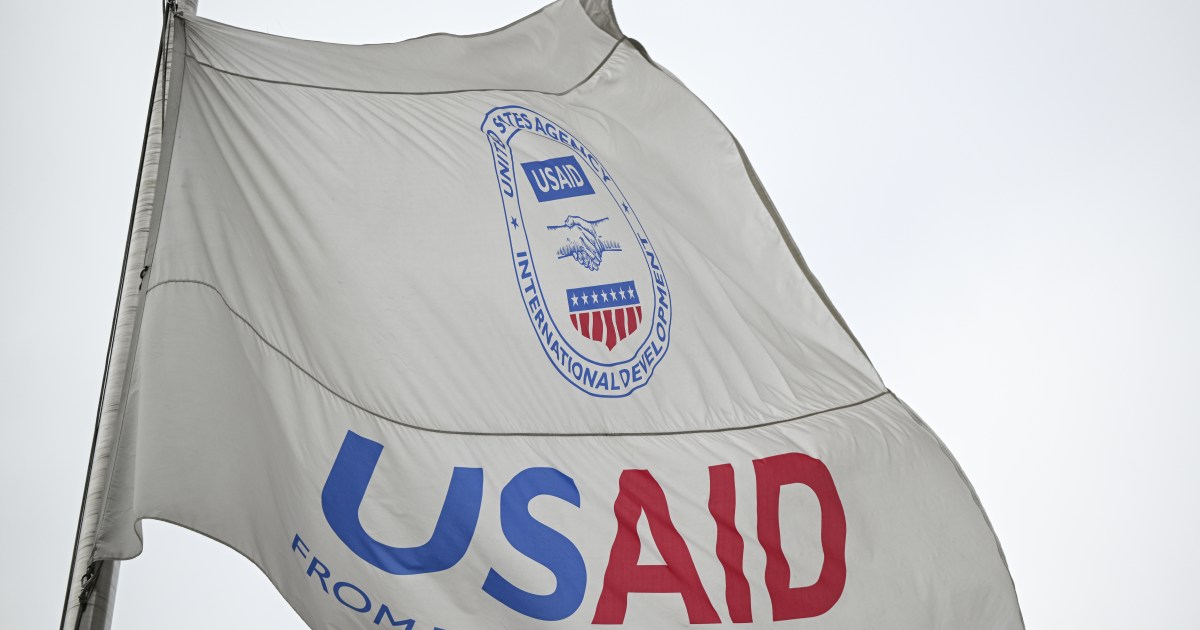England v Australia: Women’s Test
Venue: Allegiant Stadium, Las Vegas Date: Saturday, 1 March (02: 00 GMT, Sunday, 2 March)
In Las Vegas, world champions Australia will face England, and Lisa McIntosh is open about her thoughts.
“Do you know? It makes me feel really proud”, says the former Great Britain captain. “But I’m not going to lie – I’m a bit envious.
“I’d have loved to have just flown in with my kitbag and traveled to Vegas with it.” But I’m made up for them. “
McIntosh is one of the pioneering women they can thank when England’s players leave on Saturday night at Allegiant Stadium in Vegas.
Twenty-nine years ago, with minimal help, that group organised and self-funded a Great Britain tour to Australia – and beat the hosts. The Ashes series is still the last one for the British rugby league.
So they know what it takes to defeat the Jillaroos.
” I think what England need to do is not fear them, “McIntosh says”. People immediately start to worry because Australia is so good.
“But you go out there and you be confident. If you match them player for player, there’s no reason why you can’t beat them”.
Back in 1996, Great Britain’s travelling party overcame the odds to defeat Australia.
A series that was on a knife edge until its final seconds featured funding battles, scrambles for flights and accommodation, a tour manager carrying £29, 000 in a briefcase, disappearing kit and emotional phone calls home.
Then came the forging of lifelong friendships, belated Hall of Fame recognition – and a victory shield that vanished.
‘ This is what I want, and I haven’t got any money ‘

“It was basically about two weeks before we were due to go that we actually knew we were going”, says Jackie Sheldon, Great Britain’s assistant coach in 1996.
Sheldon was secretary of the Women’s Amateur Rugby League Association (Warla), which then oversaw the British women’s game, when it received an invitation in 1995 to tour Australia.
The simple part was accepting the offer. Then came the trickier aspects. For a start, there wasn’t a Great Britain women’s team.
Sheldon established a committee to find players, form a backroom team, and set up a chair for Warla, Anne Thompson. With no budget, everyone had to be persuaded to take on the roles unpaid.
“These people who got involved were professional people”, Sheldon says. They were also providing free time for everyone.
” I would go: ‘ This is what I want, and I haven’t got any money. Will you come on board? ‘ And they’d say: ‘ Yeah. ‘ because they backed what our goal was.
Ian Harris, a coach who worked in local authority sports development, took charge of the team, with Sheldon and Thompson as his assistants, and a squad of 26 was put together. Now they had to find £70, 000 to pay for the tour.
Sheldon, herself then a council sports development officer, got to work”. We were not funded by anywhere, “she says”, so I wrote a grant application to the Foundation for Sport and the Arts, and we got something like £34, 000 from them. And each of the players were given a target of about £1, 000 to raise. “
As the summer of 1996 approached, the plans were coming together.
The tour manager with £29, 000 in a briefcase
Sheldon and Thompson were acquainted with Hull Vixens player Nikki Carter, who had management experience from a care facility. They inquired if she would take over as tour manager.
” I was asked: ‘ Do you think you could help them out? ‘ “Carter says.
” I was like: ‘ What do you mean? ‘ They said: ‘ Go to Australia with them. ‘ I was like: ‘ Hmm, I’d love to. Best go and ask my boss, really. ‘
“But it suddenly started to unravel. There were many things that weren’t actually organized when planning to travel to Australia 12 weeks out.
The touring party had no flights, no accommodation, no kit.
Sheldon says: “The previous manager, prior to Nikki, had been tasked with securing the flights, and he didn’t secure them and didn’t tell us, so it was only about three weeks beforehand that it all came out that we had no flights.
” My manager allowed me time in work to phone all the airlines to try to get, I think, 32 flights at three weeks ‘ notice. “
As Sheldon sorted flights, Carter sourced kit, chased hotels and helped to complete the fundraising”. She claims that the majority of the money was raised during the final eight weeks. For the tour, they needed to quickly open a bank account. And in 1996, that was a problem.
” There was no bank account set up in Australia, “Carter says”, and it wasn’t like now, where you could ring the bank and say: ‘ I’m going to put this money in there and I’m going to spend it from my bank account. ‘
“One of the girls on the tour, who played for Wakefield, was a bank manager. And she said: ‘ It’s not possible to set the bank account up. It took too long. ‘
I used travelers’ checks to pay for 32 flights.
The Great Britain party made it to Australia, but there were more obstacles. Arriving at Sydney Airport, they were hit with an immediate transport problem. Their coach was only big enough to accommodate either all the players or the entire kit, but not both. Carter, meanwhile, was organising team meals on the fly.
” I think there was a lot of bartering, “captain McIntosh says”, trying to get good deals, where we’d get breakfast and tea included. “
A Sydney Select side defeated 86-0 in a seven-game series, before an Australian Capital Territory side defeated 36-0 in Canberra, where the first Test against Australia was also played.
Great Britain lost that match 16-14, to a late penalty – amid controversy.
” We got a penalty in the last few minutes, “McIntosh says”. Karen Burrows changed it, but the authorities forbade it because they claimed it didn’t go over.
Next was a trip north to Brisbane, with the team booked in for an exhausting 12-hour, 700-mile-plus coach journey. Tour manager Carter intervened.
” We’d gone on the coach from Sydney to Canberra, but we needed to fly to Brisbane, “Carter says.
So we went to the airport and asked, “Would you be able to get us 32 flight tickets tomorrow from Canberra to Brisbane?” And I had a strange look at the desk employee. He tapped away and he said: ‘ Oh, yeah, yeah, we could do that. ‘ Then, I had to negotiate with the entire luggage.
There was a sense of guilt there.
In Brisbane, the Great Britain and Australia players stayed in the same accommodation. “They were like student dorms”, McIntosh says.
The tourists had another difficulty: keeping track of their kit here.
“We were given each two shirts, so at the end of the tour, we had one to swap and one to keep so we could frame”, McIntosh says. “But the kit was racked up, and I lost a few shirts, including my spare number 13 shirt, in the bag.”
” We never found out what happened to it, but we had our suspicions. “
Britain beat a Queensland XIII 22-8 to warm up for the second Test against Australia, and they won that key match 18-12 to level the series. The decision was then made to return to Sydney.
Being far away from home proved to be challenging for some squad members who had young children.
” I rang home at certain times of the day because I knew the kids wouldn’t be there, “Carter says”. When I went, my eldest daughter was six. If I rang home, she would be crying down the phone, saying: ‘ I’m missing you, Mummy. ‘ And that phone call would take days to recover.
“I feel guilty because I’m out here and having a great time,” the statement read. At the same time, I’ve left my children at home – and as a mother, is that the right thing?
‘ I said to the physio: Have we won? ‘

After a 30-0 victory over a Presidents XIII in Sydney, Great Britain faced the deciding Test against Australia. It was a nail-biter.
McIntosh ran half the length of the pitch for a fine individual try, but the tourists fought back and established a healthy lead. As the clock ticked down, Britain held a slender 20-18 lead.
” We were defending on our line for our lives for the last 10 minutes, “McIntosh says”. Simply put, it never seemed to end.
After being concussed during a clattering tackle, the captain recalls little of watching those final minutes.
” When the final whistle went, “McIntosh says”, I said to Paula Clark, the team physio: Have we won?
The airport was like tumbleweed when we entered.

At Heathrow, the Britain squad had a quiet reception. “We came through the airport and it was like tumbleweed”, McIntosh says.
Sheldon was then hired as the national women’s rugby league development manager after winning the series and was persuaded to do so. She would also be England’s head coach through a 1998 tour to New Zealand, the World Cups of 2000 and 2003 and, in between, a return tour to Australia in 2002.
“The development dropped off after 2003, when I left”, Sheldon says. The RFL didn’t prioritize GB at the time. Since 2002, neither England nor GB have defeated Australia, but it was reestablished in 2007 when Sport England began funding it.
You can tell a lot about what Australia started doing after that time.
Having been inducted into the Hall of Fame
Belatedly, Great Britain’s 1996 team have been recognised. Former referee Julia Lee, who officiated during the tour, began driving the Women in Rugby League project, a celebration of the sport’s female pioneers.
As the first women to be inducted into the Rugby League Hall of Fame in 2022, McIntosh joined teammates Sally Milburn and Brenda Dobek in doing so.
Last October, Jane Banks and Michelle Land followed, while the 1996 side became the first team to be inducted.
“I think it’s sad that it took so long, but I think it’s fantastic that we’re in a different place now”, Carter says.
October’s ceremony in Wigan brought virtually the entire squad back together.
“There was a camaraderie that was built in ‘ 96”, Carter says. “We all met up for the Hall of Fame inauguration, and it was like we’d never been away from each other”.
The Australians and Great Britain’s players also shared long-lasting friendships, which ultimately resulted in McIntosh receiving one of her shirts.
According to McIntosh, “I never found the shirt that was stolen during the tour, but I did get the one I swapped back.” “Their captain, who I swapped my shirt with, returned it to me”.
‘ It’s in somebody’s attic – I can’t see where else it would have gone ‘

Britain’s players, wearing the Australia shirts they had just swapped, posed for a team picture after winning the series.
In that special moment, they showed off their prize – a large shield.
Three years ago, before an exhibition to celebrate their achievements, an appeal was put out to locate the shield. It hasn’t turned up.
“We thought we’d brought it back, and that it was at the RFL”, McIntosh says. “But it’s not”.
The mystery remains unresolved. “Lisa always said she reckoned I had it in my attic”, Sheldon says. “My attic has pretty much everything else, but not that shield.”
If anyone does have it, they’re sitting on a piece of history.
Related topics
- Rugby League









